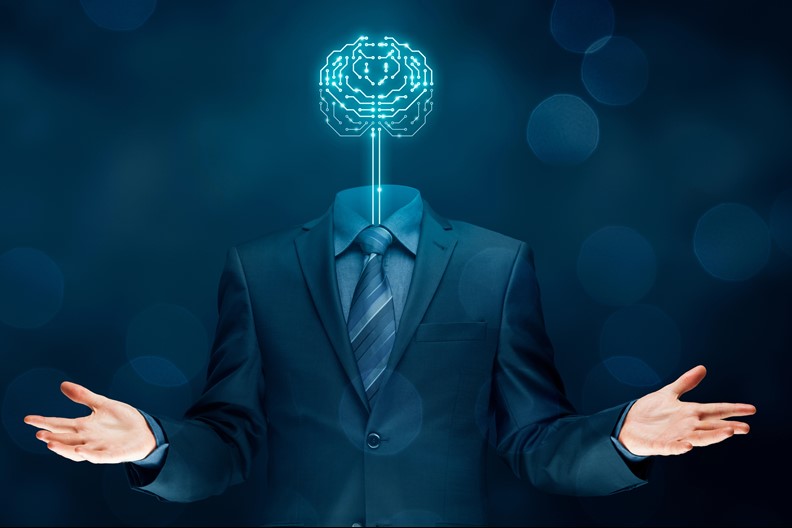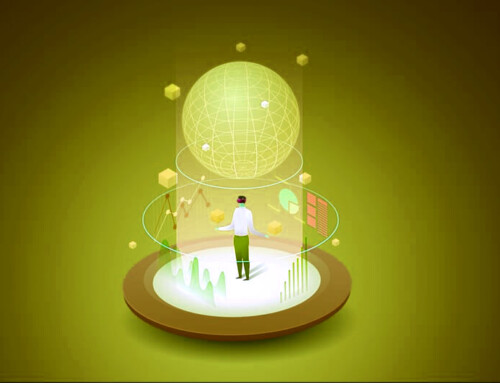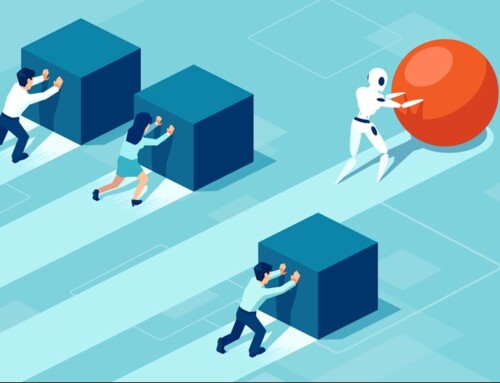When used strategically, artificial intelligence (AI) tools can be a powerful solution for corporate meeting and event planners, helping you create, find, and select engaging content. The key is knowing how to use them effectively to your advantage.
The positives? AI provides you with virtually endless amounts of helpful data to leverage when determining what content to feature during these gatherings. Gone are the days when your organization relied solely on collecting information from its own assessments, surveys, or focus groups. Now, AI pulls data from multiple sources around the world, connects it in ways you may have missed on your own, and presents it to you in an organized fashion.
Like any technology, AI also has potential drawbacks. Whenever you completely remove the human element from something as inherently human as bringing people together to problem-solve, innovate, and team-build, you run the risk of creating dull, generic, and overused meeting content. This concept is informally known as “AI fatigue.”
Every meeting planner has access to the same datasets through AI tools. So, to avoid AI fatigue, it is crucial to ask questions like the following:
- How can training sessions become valuable in a way that creates a competitive advantage?
- Are the team building activities fresh, new, and exciting – or just the same types of activities with a slightly different twist?
- What does the problem-solving process look like for this event? Does it consider solutions beyond the norm that are specific to the topic at hand?
- Will interactions with key innovators, senior and C-suite executives, and top performers inspire meeting attendees to think bigger and reach further?
Your answers to these questions will significantly affect the success of each event you plan. Above all else, you must be careful to avoid allowing AI to do all the heavy lifting for you. Think of these tools as your assistant, who can handle tasks such as research and data gathering, while you focus on the creative process. Human involvement is imperative for the latter to ensure that the meeting content captures and holds the attention of attendees.
MAKING A CASE
Several marketing campaigns launched by prominent brands illustrate why striking the right balance between technology and a human touch is crucial.
Polaroid
The battle-worn photography and consumer electronics company, Polaroid, has become somewhat of a “comeback kid” with its emphasis on sensory experiences. Marketing efforts by the brand highlight that viewing digital images on a smartphone cannot replicate the experience of holding a photograph print in one’s hand. (1) Similarly, AI simply cannot replicate the power of sensory experiences.
So, how does this concept relate to corporate meetings? First, it highlights the distinct advantage of getting together in person over doing so virtually. Second, the Polaroid case study illustrates the significant impact that sensory experiences can have when leveraged effectively. With this idea in mind, you might consider incorporating at least one or two such experiences into the meetings you plan.
General Electric (GE)
Unplanned downtime can be costly for companies in many industries. GE has been promoting its Predix AI platform as a potential solution. This technology uses sensors placed on equipment to collect real-time data on operating factors such as vibration and temperature. AI technology reviews and analyzes this data to predict equipment failures before they occur, allowing users to schedule maintenance proactively and possibly minimize disruptions.
However, without involvement from human engineers, who are essential for interpreting analyses made by AI and making the final decisions on maintenance, these efforts would lack operational expertise and trustworthiness.
You play a similar role as a meeting planner, leveraging your industry expertise, resources, and contacts to determine whether elements of an event offer genuine value.
Hewlett-Packard (HP)
HP reaped benefits, including improvements in data analytics and increased revenue, when the company began using a pricing solution that enabled accurate and consistent pricing on a global scale. (2) This case study demonstrates that AI excels at evaluating price points to determine whether sales professionals may be leaving money on the table or, conversely, setting price points that consider “hidden” add-ons or a low cost-to-value ratio.
However, people are uniquely qualified to craft sales quotes and proposals that are tailored to the client’s budget, goals, and needs. And it is salespeople who drive the effort home by appealing to the emotional impact of making the purchase that moves their sales prospects to act.
Much like prospects ultimately buy products and services because of human connection, corporate meetings will ultimately succeed or fail based on the connections made between attendees. As a meeting planner, you provide the spark of inspiration and excitement that promotes attendee engagement. Although AI is a helpful tool for generating ideas and pulling informative data, ultimately, it is your job to transform these findings into concepts and activities that are fresh and engaging for attendees.
AI CANNOT REPLACE THE HUMAN TOUCH
AI fatigue occurs when it is overused as a shortcut and/or used to replace the creativity that only human beings can bring to the mix. People have the inherent ability to view situations and ideas from multiple perspectives, something that AI’s vast knowledge base of data, despite its limitations, cannot do.
Technology also falls short when it comes to providing sensory experiences that can be seen, heard, tasted, and touched. These crucial interactions can only occur in person, one person to another.
What does this mean for meeting planners? You play a key role in synthesizing the vast store of information provided by AI tools. Without your creativity and insights, the data is flat, dry, and lacks originality.
The takeaways:
- Leverage AI to achieve operational efficiency, using it for logistics such as registration, schedules, common questions and answers, and backend data management.
- Leave content, engagement, and narrative-building to people who can pull from their collective wisdom and lived experience.
- Prioritize genuine relationships and memorable moments, championing authenticity over algorithmic sameness.
By following these principles, you can minimize AI fatigue and improve the chances that attendees leave feeling inspired, connected, and ready to drive innovation.
Looking for a tech-savvy and creative meeting planner to set up your next corporate meeting or event? Get in touch with Gavel International for more information.
_______________________
SOURCE(S):
1 https://press.polaroid.com/251772-polaroid-s-new-campaign-pushes-back-against-the-reign-of-screens-and-ai-and-celebrates-analog/
2 https://pros.com/learn/case-studies-testimonials/hp-pricing-transformation-with-pros/
This article was last updated on September 29, 2025
- How to Stop AI Fatigue from Derailing Your Next Corporate Event - September 29, 2025
- User-Generated Content in Marketing Wins Audience Trust - September 15, 2025
- 7 Ways to Elevate Culinary Experiences at Corporate Events - September 1, 2025






